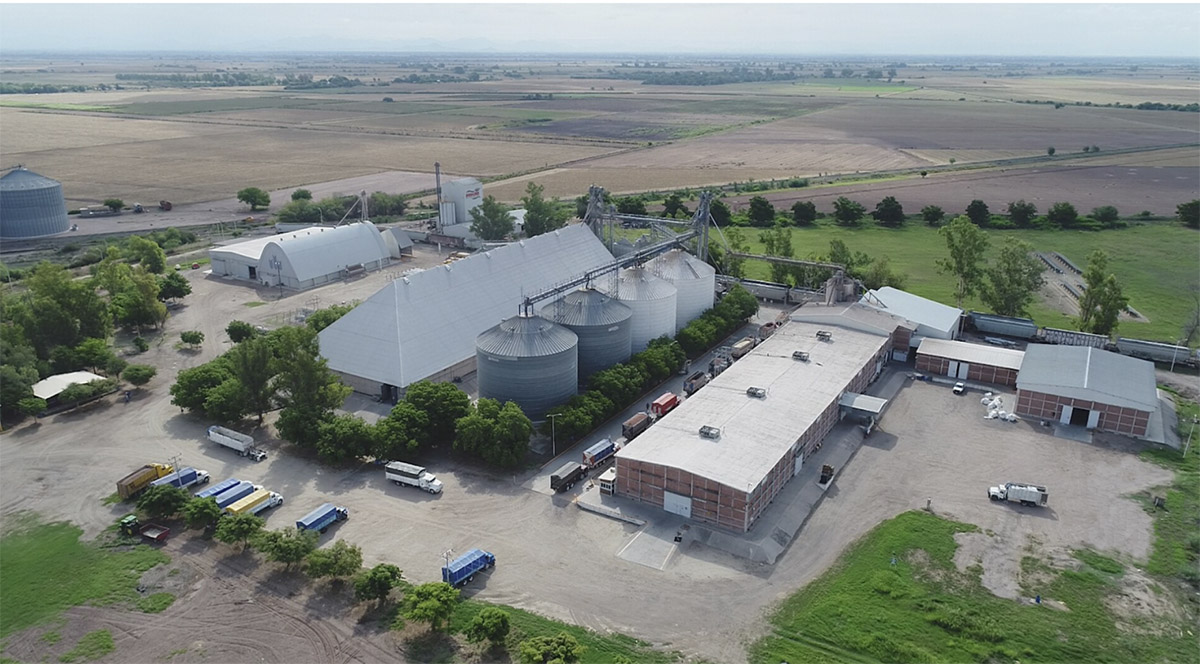November 17, 2022
Roberto Pérez, commercial manager of PURP, a pulse and grain trader and agricultural supplier in Sinaloa, talked to Luke Wilkinson about the resurgence of corn and shrinking pulse seedings.



The company started in 1989 and began as a result of various producers who wanted to create an organization that could look after their grains and pulses and then market them. At that time, our area, Guasave, didn't have the infrastructure that it has right now so the idea was to create a company that all of the growers could bring their crops to and the company would take charge of selling it.
I've been working here for around six years. I’m one of two commercial managers at the company, one manager takes care of the farming products we provide such as the seeds, agricultural inputs, and the bank loans necessary for production.
I’m the other commercial manager - my responsibilities are in the commercial side of the business like national sales, export sales, etc. My focus is on how the markets are moving and where the need is for our products, both within Mexico and abroad.

We market a variety of commodities: yellow beans, alubia beans, red sorghum, white corn and chickpeas. These are the five main products that we sell.
Our corn is sold nationally and our sorghum is used for feed. In terms of chickpeas, we don't sell a great deal nationally, but what we do sell here is in the smaller sizes. The larger sizes of chickpeas are exported to our main markets around the world which are Spain, Portugal, Peru, and the United States.
In the past we also worked with the UAE and Lebanon as we used to have a broker who supported us in that part of the world. After the pandemic we had to revise our costs for sending products to the Middle East and it was just no longer as profitable. Payments were 60 days, and in Peru the payments were only 15 days on top of offering higher profits, so we have focused our efforts more on the United States, Peru, Spain, and Portugal.
Our alubia beans also go to those four markets, and our yellow beans are sold nationally and to the US and Peru.
For us, the biggest challenges were particularly in logistics. Maritime freight became really complicated in the sense that in some moments we didn't have freight at all. Our logistics department is always really on the ball and starts from 8 o'clock in the morning calling and calling and calling the shipping companies. Fortunately, I think that their insistence meant that the shipping company thought: ‘these guys really want to sell their products, so let's give them an opportunity.’
It was a huge problem around the world - but it didn't affect us too much. It meant that we took the decision to close our sales to the Middle East and to send our product to the United States by land rather than sea. We looked at the costs of freight and decided that it was more convenient to send our product to Peru, then wait to see if we could continue sending our product to Spain when the freight prices normalized. In that sense, we avoided a lot of problems because we kept our product moving.
Of course there were smaller harvests last year but this year there won't be any drought. It seems we are going to have plenty of rain, and the reservoirs are going to be at around 80%, rather than the 50% or 60% of last year. Whatever crop farmers decide to grow this year, there's going to be enough water to do it.
Pulse acreage could go down as corn needs a lot of water and in previous years producers have seen that rises in the price of corn have been really profitable for them. It could mean that this year there is some scarcity in chickpeas and beans.
A week ago the numbers came out that there are only 3000 ha of beans registered when in previous years around this time the numbers had been double or even almost triple that. Yields will probably be around two tons or a ton and a half - here in Sinaloa usually we produce 100,000 tons of beans and this year it may be that what has been planted could produce around 25,000 tons.
From my point of view, I think this year could be a year for quite small pulse inventories in Mexico. In Sinaloa, chickpea seedings were around half of what they were last year, mostly due to producers having decided to seed corn. I would expect chickpea yields to be between 2.2 and three tons per hectare with a good price for producers.

“I would expect chickpea yields to be between 2.2 and three tons per hectare with a good price for producers.”
A scarcity will raise prices in the market. The last chickpeas that we sold that were medium/medium to large size we sold it around $1400 or $1350 a ton; a scarcity could put those prices up by $200 or $300. Will the market pay it? We can’t know, but that is likely to be the producer’s thinking on price.
I think the USA will have a lot of production as they are growing a lot in terms of their beans and chickpea output.
I've been to events like this in the past but previously they were more focused solely on buyers and sellers of pinto beans or soybeans whereas this event is focused particularly on Mexico; the buyers, the producers, and the exporters. The event is looking to bring together people from around Latin America and the United States who wish to buy our products. It's a way of putting the importance back on Mexico and saying: ‘Hey, Mexico! You are a big exporter, so we're going to bring you buyers from around the world.’
I'm also very interested in the different people who are going to speak – many of them are people we deal with every day and we are often working in the same channels of sales so it’s useful. The dates of the convention are also really good given how much is already seeded. At that point the only thing you're waiting for is the harvest itself.
“People in the Latin community in the US want to buy products from their home countries which for us means that there is a huge opening for sales of Mexican products.”
In the end it's another channel of sales where you have a lot of options to buy and sell - it means you're not limited to just your own internal market. The dates of seedings and harvests are different which means you will have products the whole year round.
People in the Latin community in the US want to buy products from their home countries which for us means that there is a huge opening for sales of Mexican products.
We want to raise our bean and corn exports to the United States, and our chickpea and bean exports to Peru. We would also like to up our sales of alubia beans and chickpeas to Spain and continue forming new partnerships and consolidating our alliances with the clients that we already have.
Another goal is to work more on value-added products to be able to move into different markets, but overall the most important thing is to keep growing and to keep being recognised for our quality, great service, and for the trust that clients know they can place in our company.
Disclaimer: The opinions or views expressed in this publication are those of the authors or quoted persons. They do not purport to reflect the opinions or views of the Global Pulse Confederation or its members.